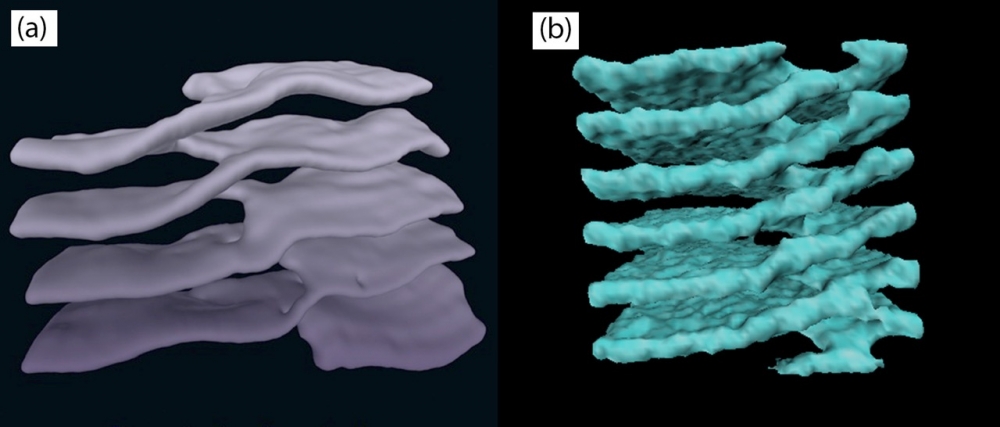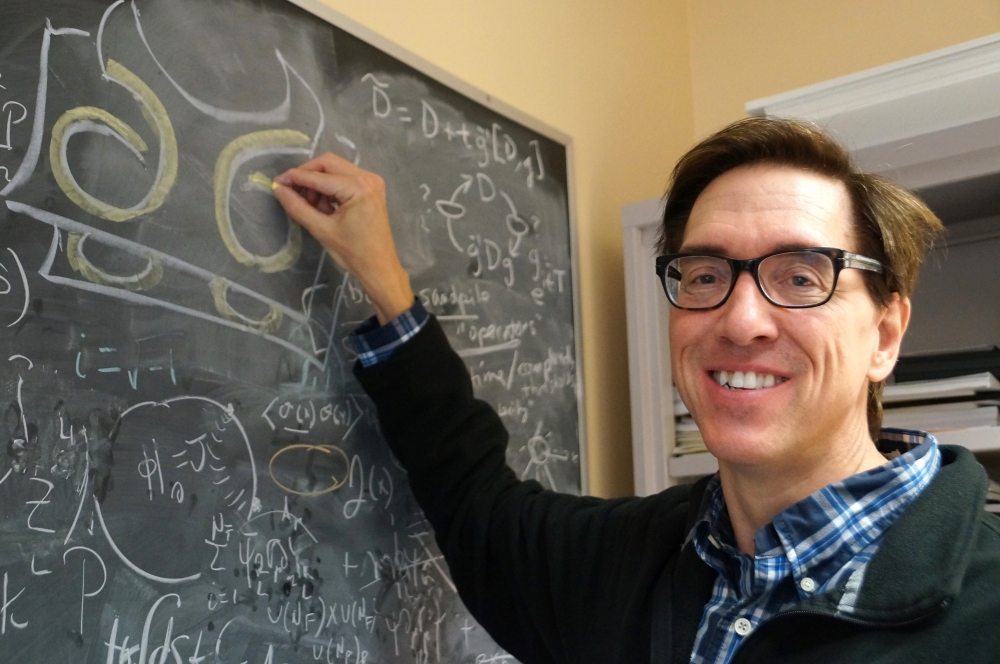
Cosmic Connection

We humans may be more aligned with the universe than we realize.
According to research published in the journal Physical Review C, neutron stars and cell cytoplasm have something in common: structures that resemble multistory parking garages.
In 2014, UC Santa Barbara soft condensed-matter physicist Greg Huber and colleagues explored the biophysics of such shapes — helices that connect stacks of evenly spaced sheets — in a cellular organelle called the endoplasmic reticulum (ER). Huber and his colleagues dubbed them Terasaki ramps after their discoverer, Mark Terasaki, a cell biologist at the University of Connecticut.
Huber thought these “parking garages” were unique to soft matter (like the interior of cells) until he happened upon the work of nuclear physicist Charles Horowitz at Indiana University. Using computer simulations, Horowitz and his team had found the same shapes deep in the crust of neutron stars.
“I called Chuck and asked if he was aware that we had seen these structures in cells and had come up with a model for them,” said Huber, the deputy director of the Kavli Institute for Theoretical Physics (KITP). “It was news to him, so I realized then that there could be some fruitful interaction.”
The resulting collaboration, highlighted in Physical Review C, explored the relationship between two very different models of matter.
Nuclear physicists have an apt terminology for the entire class of shapes they see in their high-performance computer simulations of neutron stars: nuclear pasta. These include tubes (spaghetti) and parallel sheets (lasagna) connected by helical shapes that resemble Terasaki ramps.
“They see a variety of shapes that we see in the cell,” Huber explained. “We see a tubular network; we see parallel sheets. We see sheets connected to each other through topological defects we call Terasaki ramps. So the parallels are pretty deep.”
However, differences can be found in the underlying physics. Typically matter is characterized by its phase, which depends on thermodynamic variables: density (or volume), temperature and pressure — factors that differ greatly at the nuclear level and in an intracellular context.
“For neutron stars, the strong nuclear force and the electromagnetic force create what is fundamentally a quantum-mechanical problem,” Huber explained. “In the interior of cells, the forces that hold together membranes are fundamentally entropic and have to do with the minimization of the overall free energy of the system. At first glance, these couldn’t be more different.”
Another difference is scale. In the nuclear case, the structures are based on nucleons such as protons and neutrons and those building blocks are measured using femtometers (10-15). For intracellular membranes like the ER, the length scale is nanometers (10-9). The ratio between the two is a factor of a million (10-6), yet these two vastly different regimes make the same shapes.
“This means that there is some deep thing we don’t understand about how to model the nuclear system,” Huber said. “When you have a dense collection of protons and neutrons like you do on the surface of a neutron star, the strong nuclear force and the electromagnetic forces conspire to give you phases of matter you wouldn’t be able to predict if you had just looked at those forces operating on small collections of neutrons and protons.”
The similarity of the structures is riveting for theoretical and nuclear physicists alike. Nuclear physicist Martin Savage was at the KITP when he came across graphics from the new paper on arXiv, a preprint library that posts thousands of physics, mathematics and computer science articles. Immediately his interest was piqued.
“That similar phases of matter emerge in biological systems was very surprising to me,” said Savage, a professor at the University of Washington. “There is clearly something interesting here.”
Co-author Horowitz agreed. “Seeing very similar shapes in such strikingly different systems suggests that the energy of a system may depend on its shape in a simple and universal way,” he said.
Huber noted that these similarities are still rather mysterious. “Our paper is not the end of something,” he said. “It’s really the beginning of looking at these two models.”



